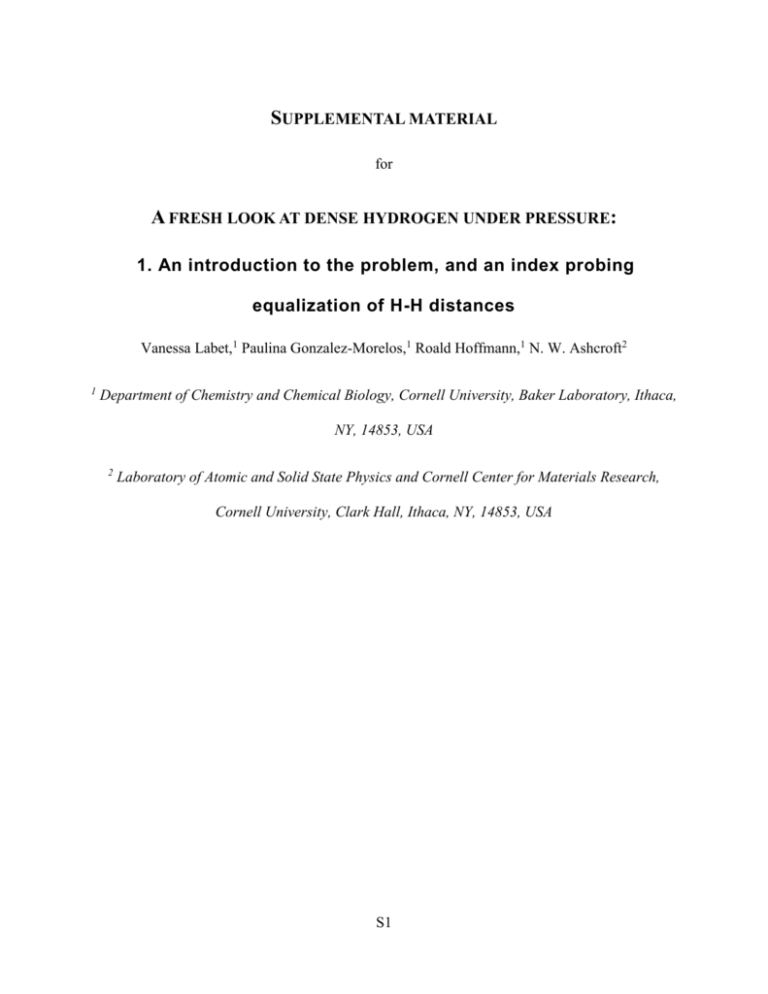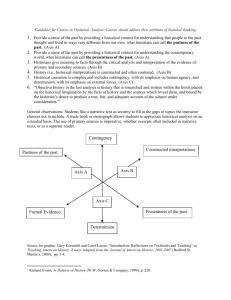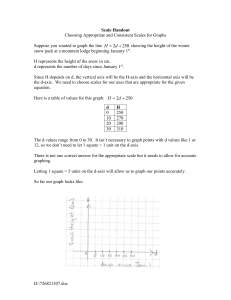SM_H1 Labet et al_A11.09.0227
advertisement

SUPPLEMENTAL MATERIAL for A FRESH LOOK AT DENSE HYDROGEN UNDER PRESSURE: 1. An introduction to the problem, and an index probing equalization of H-H distances Vanessa Labet,1 Paulina Gonzalez-Morelos,1 Roald Hoffmann,1 N. W. Ashcroft2 1 Department of Chemistry and Chemical Biology, Cornell University, Baker Laboratory, Ithaca, NY, 14853, USA 2 Laboratory of Atomic and Solid State Physics and Cornell Center for Materials Research, Cornell University, Clark Hall, Ithaca, NY, 14853, USA S1 Figure S1. Different views of the P63/m structure at P=300GPa (rs = 1.33 – a relative compression of 12.6). (a: along axis a; b: along axis b; c: along axis c; d: one layer). The dashed lines represent the unit cell. At this pressure, the interlayer distance, defined as the shortest distance between two successive (ab) planes containing H2 units, is 1.63Å (3.09 a0). S2 Figure S2. Different views of the C2/c structure at P=300GPa (rs = 1.33 – a relative compression of 12.6). (a: along axis a; b: along axis b; c: along axis c; d: one layer). The dashed lines represent the unit cell. At this pressure, the interlayer distance, defined as the shortest distance between two successive (ab) planes containing H2 units, is 1.26Å (2.37 a0). S3 Figure S3. Different views of the Cmca-12 structure at P=300GPa (rs = 1.33 – a relative compression of 12.6). (a: along axis a; b: along axis b; c: along axis c; d: one layer). The dashed lines represent the unit cell. At this pressure, the interlayer distance, defined as the shortest distance between two successive (bc) planes containing H2 units, is 1.28Å (2.42 a0). S4 Figure S4. Different views of the Cmca structure at P=300GPa (rs = 1.33 – a relative compression of 12.6). (a: along axis a; b: along axis b; c: along axis c; d: one layer). The dashed lines represent the unit cell. At that pressure, the interlayer distance, defined as the shortest distance between two successive (bc) planes containing H2 units, is 0.82Å (1.55 a0). The shortest intermolecular H-H separation connects protons which are in two different layers, which is an indication that this structure actually cannot be described as layered. S5 Figure S5. Different views of the I41/amd structure at P=500GPa (rs = 1.24 – a relative compression of 15.8). (a: along axis a; b: along axis b; c: along axis c). The dashed rectangles represent the unit cell. S6 Figure S6. Evolution with pressure of the interlayer (empty circles) and average second shortest H-H distances (full squares) in the P63/m, C2/c, Cmca-12 and Cmca structures. The interlayer distance is defined as the distance between two layers of H2 molecules. Practically, it was evaluated by dividing the length of the unit cell vector perpendicular to the H2 layers by the number of layers in the unit cell. In the P63/m and Cmca structures, the second shortest H-H distance involves H2 molecules belonging to two different layers, that’s why the interlayer distance is shorter than the shortest intermolecular distance. On the contrary, in the C2/c and Cmca-12 structures, the second shortest H-H distance involves H2 molecules of the same layer. S7 Figure S7. Evolution of the intramolecular H-H distance under pressure. Black squares and red circles come from Refs. 46 and 45, respectively, and are deduced from experimental roton spectra. The points with blue triangles come from our computations of the P63/m and C2/c structures for hydrogen. S8








